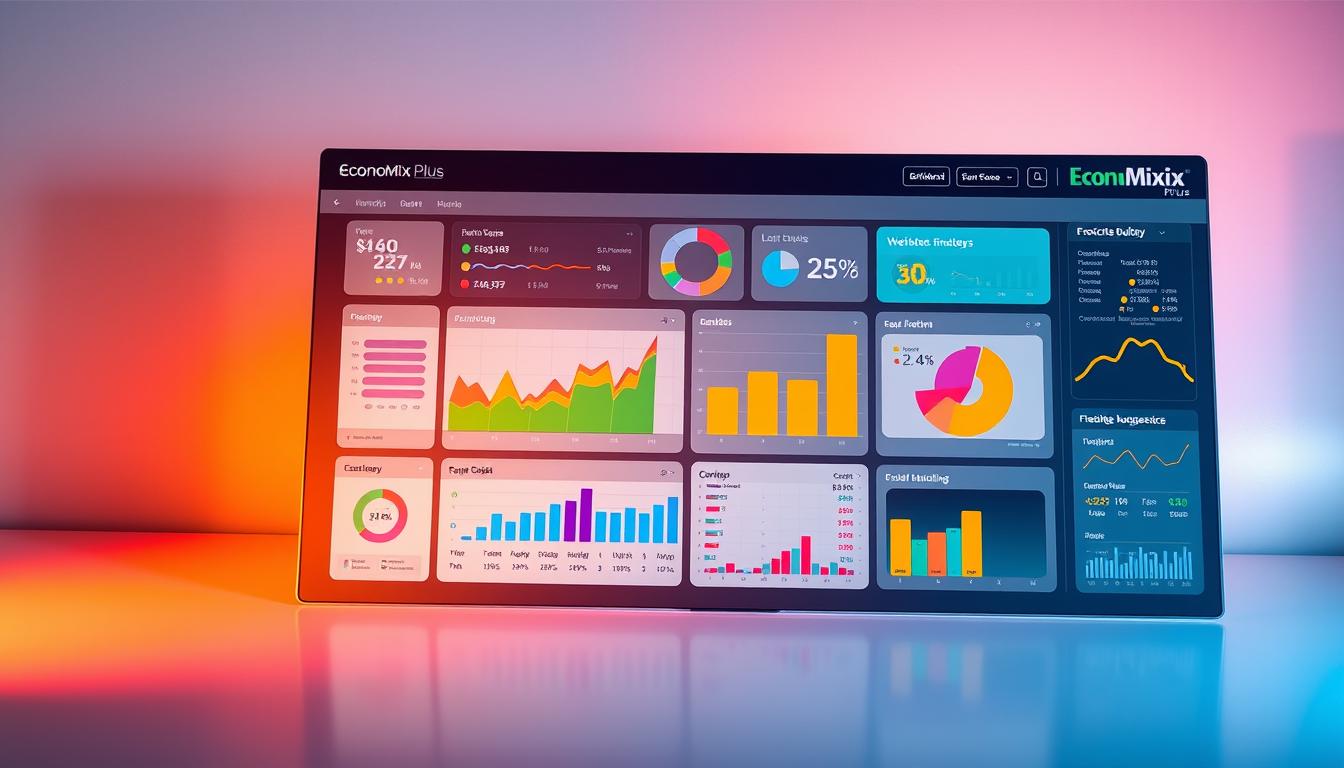Ever feel like your paycheck disappears before month’s end, no matter how carefully you track expenses? You’re not alone. Nearly 60% of Americans live paycheck to paycheck, according to data from U.S. Bank. But what if tweaking how you organize income and spending could unlock more savings, reduce debt, and create stability?
Building a practical financial plan starts with understanding where every dollar goes. Tools like EveryDollar emphasize tracking monthly expenses in clear categories—needs versus wants. This helps identify leaks in your cash flow, like impulse purchases or unused subscriptions draining your account.
A zero-based method—where income minus expenses equals zero—ensures every dollar has a job. This doesn’t mean spending everything. Instead, it prioritizes savings goals and emergency funds first. Think of it as giving your money purpose, whether it’s paying down credit card balances or funding future dreams.
This guide skips complex investments and focuses on actionable steps to align spending with priorities. You’ll learn how to balance immediate needs with long-term goals, adapt when life throws curveballs, and build habits that turn budgeting from a chore into a roadmap for control.
Key Takeaways
- Track expenses monthly to spot patterns and redirect cash toward priorities
- Use a zero-based approach to assign every dollar a role in your plan
- Build an emergency fund before tackling non-urgent debt
- Separate needs from wants to reduce unnecessary spending
- Avoid relying on credit cards to fill gaps in your budget
Understanding Budgeting Principles
Does your bank account balance surprise you each month, even when you think you’re spending wisely? Budgeting works like a financial GPS—it shows where your income goes and helps redirect funds toward what matters most. Start by listing all earnings, including side gigs or freelance work. U.S. Bank recommends tracking after-tax income first, as this reflects your actual spending power.
Mapping Your Financial Landscape
Split expenses into three buckets: fixed costs (rent), variable needs (groceries), and discretionary spending (streaming services). This reveals patterns—like overspending on dining out—that drain your cash. A simple table clarifies where adjustments can happen:
| Expense Type | Fixed Examples | Variable Examples |
|---|---|---|
| Needs | Mortgage, insurance | Utilities, medical bills |
| Wants | Gym membership | Entertainment, vacations |
Designing Your Money Roadmap
Values-based budgeting puts your goals front and center. If building an emergency fund matters most, allocate dollars there before funding hobbies. Envelope systems make this tangible—divide cash into labeled categories to curb overspending. As one U.S. Bank study notes:
“Households using visual tools save 18% more monthly than those relying on digital tracking alone.”
Prioritize flexibility. If car repairs eat into your “fun money” envelope, adjust next month’s allocations instead of dipping into savings. This builds resilience while keeping financial goals on track.
Best strategies for allocating money in your personal budget
What if every dollar you earned had a clear mission before the month even started? A zero-based budget works best for this idea by requiring you to assign roles to every dollar in your account. Unlike traditional budgeting methods, this approach starts fresh each month—income minus expenses must equal zero. This budgeting app can help you track your needs and wants effectively, ensuring that your money is allocated wisely over time.
Step-by-Step Dollar Deployment
Begin by listing all monthly income sources after taxes. Next, divide funds into non-negotiable categories like rent, insurance, and minimum debt payments. U.S. Bank’s budgeting guide emphasizes leaving no dollar unassigned—even savings get their own line item. Here’s how to structure allocations:
| Priority Level | Category Examples | % of Income |
|---|---|---|
| Essential | Housing, utilities, groceries | 50-60% |
| Financial Goals | Emergency fund, credit card debt | 20% |
| Discretionary | Dining out, entertainment | 20-30% |
Many users find physical cash envelopes effective for controlling variable spending. If you allocate $400 to groceries, that exact amount goes into an envelope—when it’s empty, you stop spending. This method prevents overdrafts and encourages mindful choices.
Review your plan weekly. Did unexpected car repairs drain your maintenance fund? Adjust next month’s allocations instead of borrowing from other categories. Tools like EveryDollar simplify tracking while helping you create an effective budget that evolves with your needs.
By naming each dollar’s purpose, you eliminate guesswork and build intentional spending habits. This clarity often reveals hidden opportunities to accelerate debt payoff or grow savings—without complex financial products.
Popular Budgeting Methods for Maximum Flexibility
Flexibility in managing finances starts with choosing a method that adapts to your life. Not every approach works for everyone—some thrive with strict categories, while others need room to adjust. To make sure you find what works best for you, explore these proven budgeting systems and consider using a budgeting app to help manage your money effectively this month.

Zero-Based vs. Values-Based Systems
Zero-based budgeting assigns every dollar a job, ideal for detail-oriented planners. Values-based methods prioritize what matters most—like family trips over daily lattes. U.S. Bank research shows households using values-driven plans save 23% more for goals like education or home repairs.
One EveryDollar user shared:
“Switching to zero-based budgeting helped me clear $8,000 in credit card debt in 10 months by controlling impulse buys.”
Cash Envelopes & Automated Savings
The envelope system turns abstract numbers into tangible limits. Allocate cash for groceries, gas, and fun—when the envelope empties, spending stops. Pair this with the pay-yourself-first method: automate transfers to retirement savings or emergency funds before covering bills.
For example:
- Direct-deposit 15% of income into a 401(k)
- Schedule monthly transfers to a high-yield savings account
- Use apps to “set aside” funds for insurance premiums automatically
These common budgeting methods simplify decision-making. Test one for 2-3 months—adjust ratios if your rent increases or side gigs boost income. The right mix turns budgeting from restrictive to empowering.
Tips for Minimizing Unnecessary Spending
Small adjustments to your personal finance habits can free up hundreds monthly without sacrificing essentials. Start by reviewing where your cash flows—unused subscriptions or impulse purchases often hide in plain sight. Make sure to distinguish between needs and wants. U.S. Bank reports households using automation tools reduce late fees by 43% while keeping bills consistent, allowing you to better manage your budget and save time and money.

Automate to Stay Ahead of Deadlines
Set up automatic payments for fixed costs like insurance and utilities. This prevents missed due dates and protects your credit score. Apps like EveryDollar let you schedule transfers to savings accounts before discretionary spending tempts you.
Streamline Your Expense Categories
Audit your budget categories every 3 months. Combine similar items (like “entertainment” and “dining out”) to simplify tracking. Here’s how to prioritize:
| Expense Type | Fixed Examples | Variable Examples | Adjustment Tips |
|---|---|---|---|
| Essential | Mortgage, car payment | Groceries, fuel | Reduce brand loyalty for generic products |
| Discretionary | Streaming services | Hobbies, gifts | Use cash envelopes for 30-day spending resets |
One EveryDollar user shared:
“Switching to cash for groceries cut my monthly food bill by $200—money now funds my emergency savings.”
Limit credit card use to planned purchases only. This avoids interest charges while keeping essential expenses covered.
Conclusion
Mastering your finances begins with clarity and adaptability. Methods like zero-based budgeting ensure every dollar supports priorities, while values-based approaches align spending with what matters most. The envelope system keeps variable costs in check, and automating savings builds consistency—U.S. Bank data shows households using these tools save 18-23% more monthly.
Regularly track income and expenses to spot trends. Always fund an emergency account before tackling non-urgent goals. This creates stability when unexpected costs arise. Tools like EveryDollar simplify adjustments, helping you balance immediate needs with future security.
Discipline turns plans into progress. By assigning clear roles to your money and avoiding complex financial products, you maintain control. Trusted strategies from sources like U.S. Bank prove that intentional budgeting isn’t restrictive—it’s empowering.
FAQ
How do I start tracking income and expenses effectively?
What’s the difference between zero-based and values-based budgeting?
Can the envelope system work with digital payments?
How do I prioritize debt repayment in my budget?
What’s the best way to build an emergency fund?
FAQ
How do I start tracking income and expenses effectively?
Begin by listing all after-tax income sources, including side hustles. Use apps like Mint or You Need A Budget (YNAB) to track spending. Categorize essentials (like rent, utilities) separately from discretionary items. Review bank statements monthly to spot patterns and adjust allocations.
What’s the difference between zero-based and values-based budgeting?
Zero-based budgeting assigns every dollar to a category until income minus expenses equals zero. Values-based budgeting prioritizes spending based on personal goals (e.g., travel or retirement). Both methods require intentional planning but focus on different motivators: efficiency vs. alignment with core values.
Can the envelope system work with digital payments?
Yes. Apps like Goodbudget replicate cash envelopes digitally. Allocate funds to virtual categories (groceries, gas) and stop spending when the “envelope” empties. This method prevents overspending on credit cards and keeps discretionary purchases in check.
How do I prioritize debt repayment in my budget?
Tackle high-interest debt first, like credit card balances, while paying minimums on lower-interest loans. Allocate extra cash to debt snowball or avalanche methods. Automate payments to avoid missed due dates, and consider trimming non-essential categories (dining out) to free up funds.
What’s the best way to build an emergency fund?
Start by setting aside $500–$1,000 in a high-yield savings account. Automate transfers from each paycheck until you save 3–6 months’ worth of expenses. Prioritize this fund over non-urgent goals to avoid relying on credit cards during unexpected events.
How often should I adjust my budget?
Review monthly to account for income changes, seasonal expenses (holidays), or shifting priorities. Use apps like EveryDollar to track real-time spending. Major life events (new job, moving) warrant immediate updates to your allocations.
Can I save for retirement while paying off debt?
Yes. Contribute enough to get employer 401(k) matches first—it’s free money. Then focus on high-interest debt. Split extra funds between retirement accounts (like Roth IRAs) and debt to balance long-term growth with reducing liabilities.













